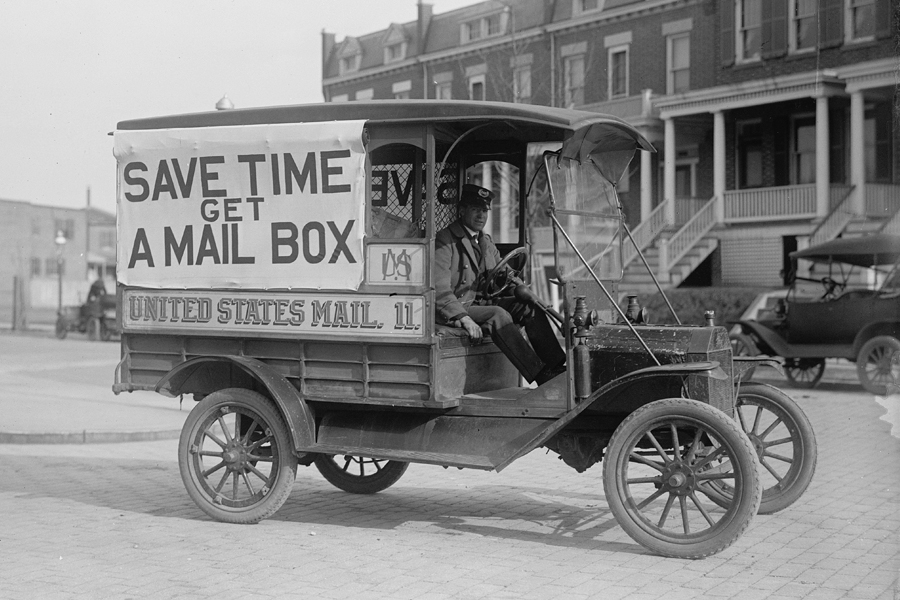You probably visit it every day, but how much do you know about your mailbox? To help mark Mailbox Improvement Week, here are five facts.
1. Curbside mailboxes have been around for more than a century. In 1896, when the Post Office Department began experimenting with rural free delivery (RFD), some customers used homemade wooden boxes as mailboxes, while others used cigar boxes, soap and feed boxes, drainage pipes, sections of stovepipe and other salvaged material. Many farmers were reluctant to invest in new mailboxes while RFD was an experimental service.
2. Mailbox sizes continued to vary for years. In 1913, when Parcel Post was introduced, many rural mailboxes could hold only the smallest packages. One Maryland carrier complained that some boxes on his route were not big enough to hold a mail-order catalog, let alone merchandise. If a package was too big and the customer didn’t live within hailing distance, carriers were instructed to leave a notice in the box asking the customer to meet him at the mailbox the next day. This system wasn’t ideal, forcing carriers to sometimes haul around the same packages for days.
3. Tunnel-shaped boxes became standard in 1915. The Post Office Department adopted two standard mailbox designs that year. Both boxes were tunnel-shaped, one of the most popular styles due to its simple construction and weather-resistant design. Any manufacturer could make the mailboxes, but only compliant models received the Postmaster General’s approval.
4. Modern mailboxes have been around since 1960. The department approved the modern-style “contemporary” box for rural use. This style had been used previously by suburban residents served by city routes, whose mailbox choices weren’t subject to regulation. Postal officials have continued to adjust mailbox specifications since then, including approving next generation mailboxes in 2015 that are large enough to hold multiple packages.
5. Mailbox Improvement Week is a longtime tradition. The program originated in 1938 as “Clean Up Rural Box Week.” The effort continued to focus on rural mailboxes each year until 1942, when the program was suspended for seven years due to World War II. In 1957, the program was widened to include all curbside mailboxes.
The usps.com Postal History page has more information about mailboxes. Got ideas for future editions of “The list?” Email them to uspslink@usps.gov.
